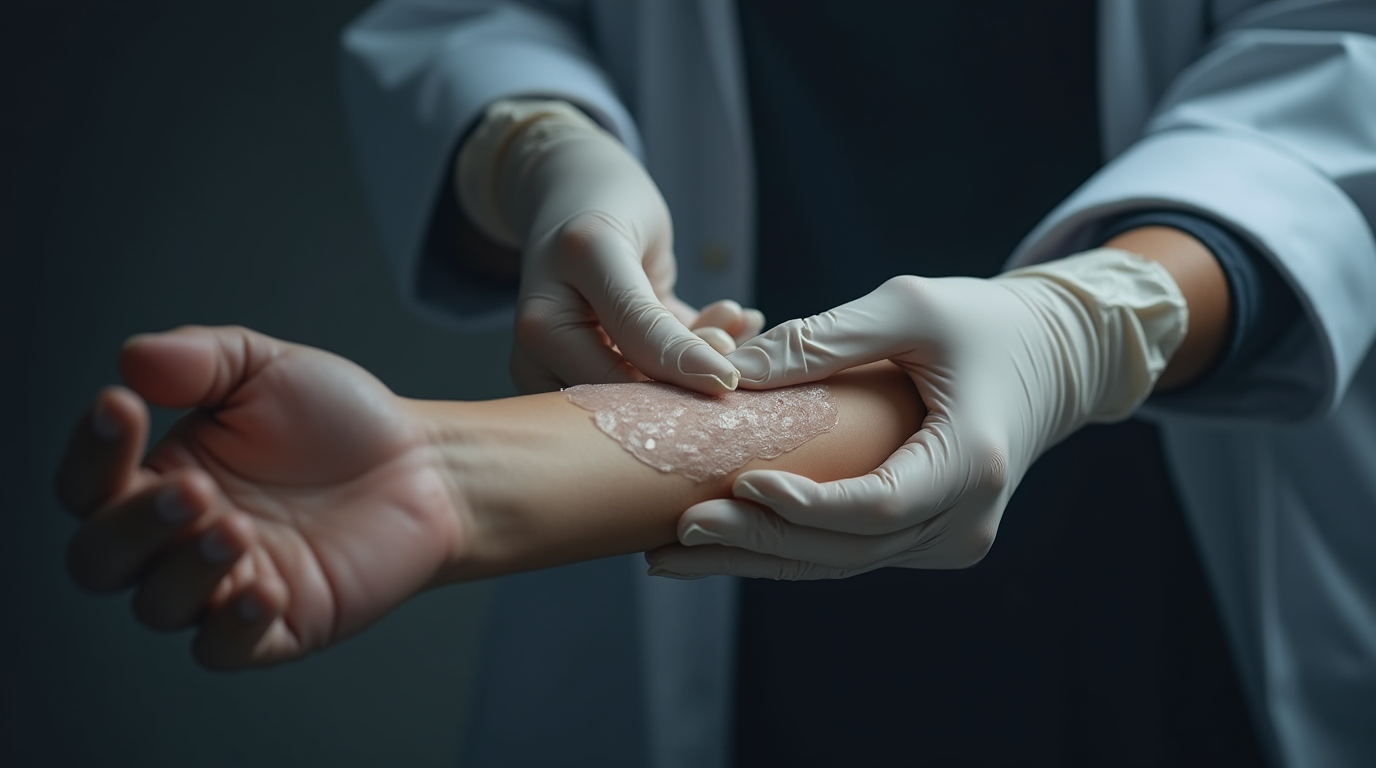An innovative hydrogel has been developed by a team of researchers to mimic the properties of human skin, which can speed up the healing process of wounds in surprising ways. This hydrogel, which can heal up to 90% of wounds in just 4 hours and complete the healing process in 48 hours, represents a significant step forward in regenerative medicine and wound treatment therapies. Its composition and operation could have crucial applications in the fields of medicine, surgery and burn care, bringing tangible benefits to millions of people around the world.
An invention based on biocompatibility and regeneration
The hydrogel created by the researchers stands out for its extraordinary ability to mimic the structure and functions of human skin, providing an ideal environment for wound healing. At the molecular level, this hydrogel is made up of a three-dimensional network of polymers that recall the characteristics of natural skin, such as moisture, flexibility and ability to protect against external infections.
The main feature that makes hydrogel so innovative is its ability to support the healing process at the cellular level. When applied to a wound, hydrogel promotes new cell growth and stimulates tissue regeneration. In practice, it acts as a “second skin”, protecting the wound from bacteria and environmental pollution while promoting healing naturally.
Remarkably fast healing time
The speed at which hydrogel heals wounds is one of its most impressive features. In an animal model experiment, the researchers observed that after only 4 hours of hydrogel application, wounds were 90% healed, with a significant reduction in signs of inflammation and tissue damage. This result is particularly surprising, since a superficial wound normally takes days or even weeks to heal completely.
In addition, total wound healing occurs within 48 hours, which is extremely fast compared to traditional wound treatment methods. The mechanism behind this acceleration of healing lies in the biochemical properties of hydrogel, which promote the synthesis of collagen and other growth factors essential for cell renewal.
Molecular and biochemical mechanisms of hydrogel
Hydrogel harnesses a series of biochemical interactions that mimic those that occur during the skin’s natural healing process. One of the key features is its ability to gradually release nutrients and signaling molecules that stimulate cell proliferation and tissue regeneration. The bioactive molecules included in hydrogel help modulate the inflammatory response, reducing the risk of infection and accelerating healing without compromising skin integrity.
The polymer hydrogel mesh is designed to be highly biocompatible, minimizing adverse reactions in the human body. This is essential to avoid rejection or side effects, making hydrogel suitable for a wide variety of patients, even those with sensitive skin or prone to allergic reactions.
Potential application
Hydrogel could revolutionize the treatment of wounds and burns, offering a fast and effective solution for acute and chronic skin lesions. Its ability to accelerate healing and reduce the risk of infection makes it ideal for patients suffering from wounds that are difficult to heal, such as those caused by third-degree burns or diabetic lesions.
Hydrogel could also be used in surgery to reduce the risk of post-operative infections, improve scar healing and speed up repair of damaged tissue. This would be particularly useful in complex surgeries or for patients with difficulty in recovery.
Conclusions and future prospects
This innovative hydrogel represents a significant step forward in the field of regenerative medicine. Due to its ability to quickly heal wounds and protect damaged tissues, it offers new opportunities for the treatment of a wide range of skin conditions. Although further clinical trials are needed to test the efficacy and safety of hydrogel in humans, the potential of this technology is enormous.
In the future, it is expected that hydrogel can be further developed and customized to treat more complex wounds, further improving patients’ quality of life and reducing recovery times. With the continuing progress of scientific research, this innovation could become a key tool in the fight against skin wounds and injuries, leading to a real revolution in wound treatment and regenerative medicine.




